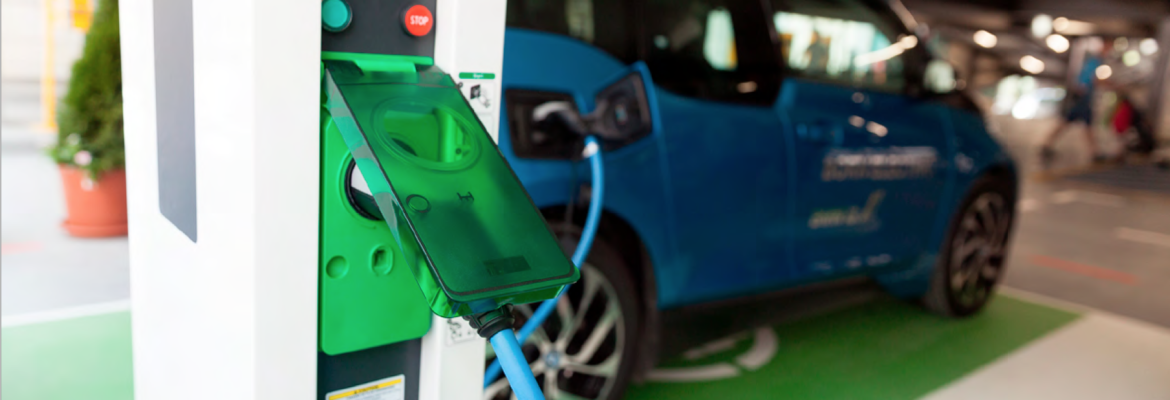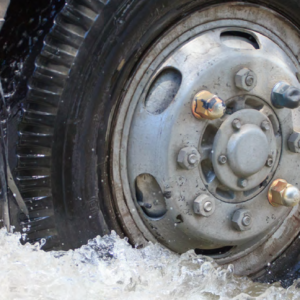THE NOT-SO-QUIET REVOLUTION
WITH PUNDITS PREDICTING TRADITIONAL GAS STATIONS GOING OUT OF BUSINESS WITHIN THE NEXT TWO DECADES, THE INDUSTRY IS UNDERGOING A MASSIVE SELF –ASSESSMENT AND DISCOVERING THAT THE FUTURE JUST MIGHT BE ELECTRIC.
By Carter Hammett
There’s a “disruptive revolution” slowing making its way across Canada and it’s being felt by gas stations coast-to-coast.
With an energy shift driven by leaps in electric vehicle (EV) technology as well the growing recognition that climate change is indeed real, charging networks are rapidly ushering in a new era in refuelling the vehicle.
This is proving to be worrisome for the gas industry overall as some pundits predict the traditional gas station could become nearly obsolete within the next 20 years.
Gas stations are a natural choice for charging stations, and yet study-after-study demonstrates that there’s a severe charger shortage and doesn’t meet current demand. Smaller more affordable EV chargers, suitable for everyday use are now being sold at some gas stations. Owner-Operators also have the choice whether or not to install single EV pedestals as stand-alone units or having them installed on pre-existing lighting poles where hydro is ready to go.
Once installed, the final decision remaining is what level of charger units to offer. There are currently three choices: 1, 2 or 3.. For EV drivers who plan to “go the distance,” DC fast charge networks are an important component to their peace of mind. Fast chargers can deliver full range charges in less than an hour. Therefore, the location of a fast charger becomes of the utmost importance. Level 2 chargers meanwhile, while typically taking a few hours to fully charge are also important because they allow drivers the convenience of going about their business while the vehicle charges.
These levels also determine the length of time needed to reach full charge. Level three for example takes about 30 minutes to complete and that time can be used to make spontaneous purchases at the Cstore located on the premises.
Furthermore with consumer range anxiety gradually subsiding, more and more purchasers are gradually turning to EV which, on a life cycle basis, has demonstrated that they are far more economical than their internal combustion counterparts. Competition and rapidly evolving technology combine to reflect a gradual decline in price points as well.
There is a parallel response from some of the more progressive and visionary gas and oil companies who view themselves as transport fuel providers. Already the wheels are in motion as companies move forward with plans to install electric chargers across the country. Examples of this include Petro Canada, Canadian Tire and Tesla.

For example, in January of this year, Canadian Tire partnered with the federal government and announced a $2.7 million investment to build 54 EV fast chargers at Canadian Tire locations across central and western Canada. When combined with the previously announced $1.3 million awarded to AddÉnergie in 2016 for the installation of 28 fast chargers, The Canadian Tire EV Network becomes one of the country’s largest with over 104 stations across the country.
At the end of 2019 the feds awarded $4.6 million to Suncor’s Petro-Canada brand to build 92 EV fast chargers, the first of which was launched in Stewiacke, NS. Additionally, Petro-Canada had previously announced that they would be installing over 50 chargers along the Trans- Canada highway at gas stations situated from Nova Scotia to British Columbia. The final outcome will span strategic locations across 7,821 km across Canada.
A Canadian government press release states, “The new funding for Petro-Canada is part of the Government of Canada’s $182.5-million investment to build a coast-to-coast charging network for electric vehicles. More than 500 fast-chargers are built or planned this year, with hundreds more expected over the next two years. Through this Electric Vehicle and Alternative Fuel Infrastructure Deployment Initiative (EVAFIDI), the Government supports not only charging stations for electric vehicles but also natural gas stations along key freight corridors and stations for hydrogen fuel cell vehicles in metropolitan centres. This investment also includes support for the demonstration of next-generation charging technologies, as well as the development of binational (Canada and the United States) codes and standards for low-carbon vehicles and infrastructure. More so, Canada operates a sales target of 100% zero-emission vehicles in 2040 with interim goals of 10 per cent by 2025 and 30 per cent by 2030. “
Not to be outdone, Volkswagen has jumped into the fray as well. A new subsidiary company, Electrify Canada, is planning a DC charging network. For starters, 32 charging stations, some of them capable of high power charging, will be installed near highways and in metropolitan areas around British Columbia, Alberta, Ontario and Quebec with four charge points and performance between 50 and 350kW on average.
Additionally, there are now several provincially –backed and local charging networks allowing EV drivers to connect in a plethora of different areas.
Perhaps most relevant to readers are the 14 fast chargers backed by Newfoundland Hydro along provincial highways by the end of 2020.
The cumulative output of all this activity narrows the gap between urban and rural drives, which in turn becomes a boost to drivers still concerned about range. It could (and should result not only in increased consumer confidence but a gradual shift towards electric in the coming years)
NEXT STEPS
Generally all stakeholders agree that despite the surge in interest in EVs much work remains to be done. Infrastructure remains the biggest issue.
Other problems exist as well. For starters, having enough power at the right locations is proving to be somewhat complex. A suite of EV chargers on full power uses as much power as an office tower and that might mean that some rural areas will literally be left in the dark.
Another significant hiccup to contend with is the fact that many people who currently refuel at the gas station will now be able to recharge from home. That of course, puts another nail in the potential gas station coffin. Canada has established a goal that by 2040—a mere two decades away—all new light-duty vehicles will be zero-emission. It goes without saying that having a sophisticated and growth-oriented charging network will remain a given.
That said, it will take decades of substantial leadership and a continuous flow of monies to implement and nurture the care and feeding of a fully integrated Canadian charging network. That just might mean that conventional gas stations are going the way of the dodo.


